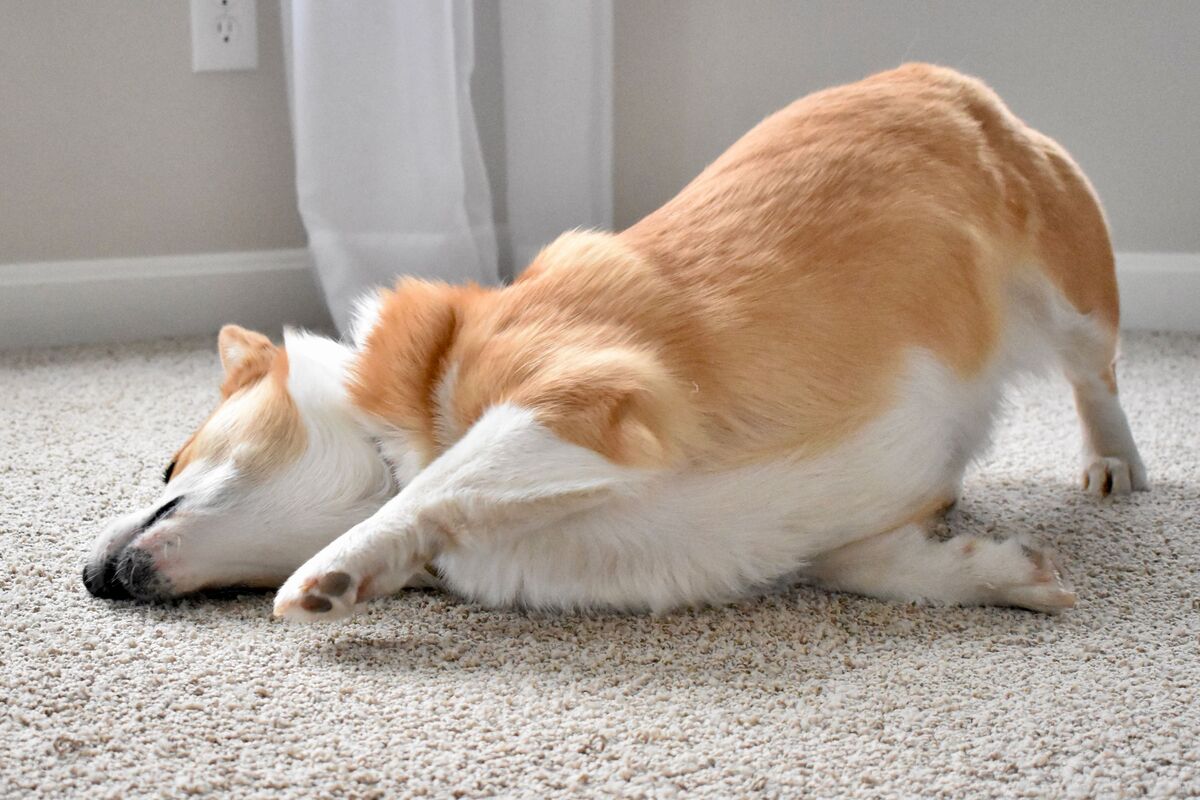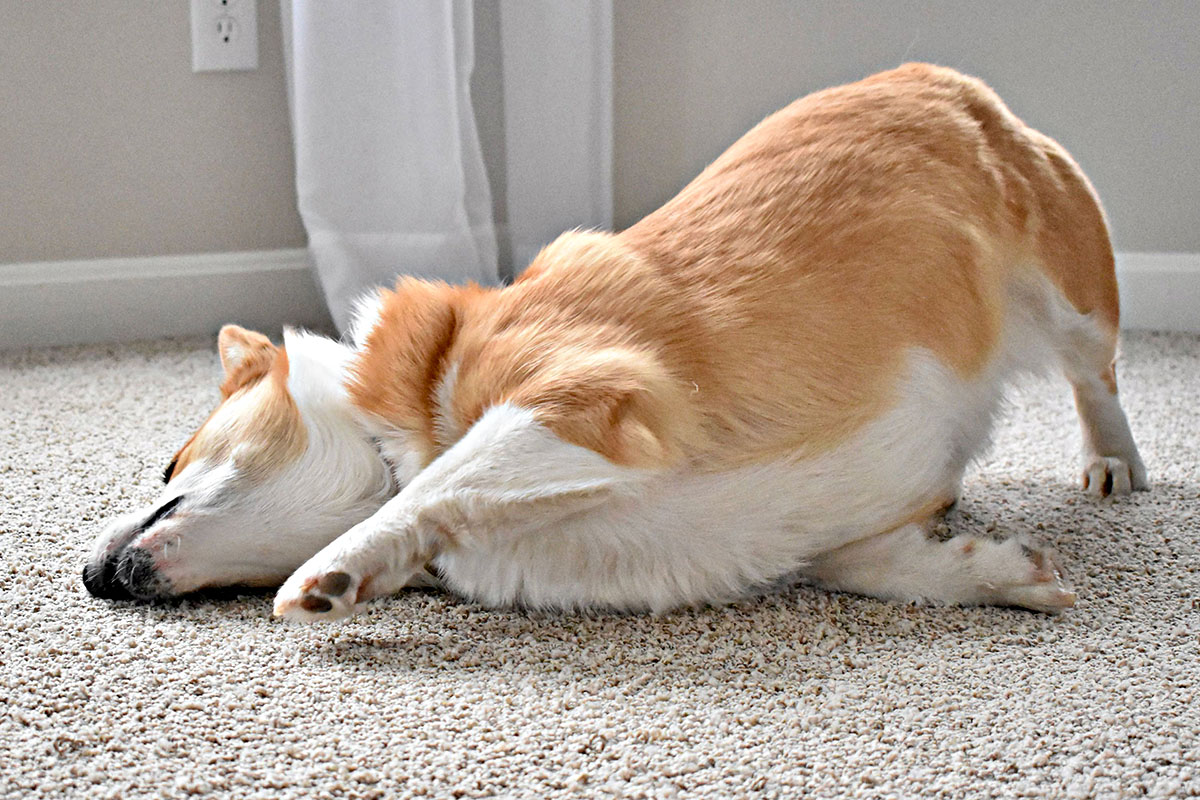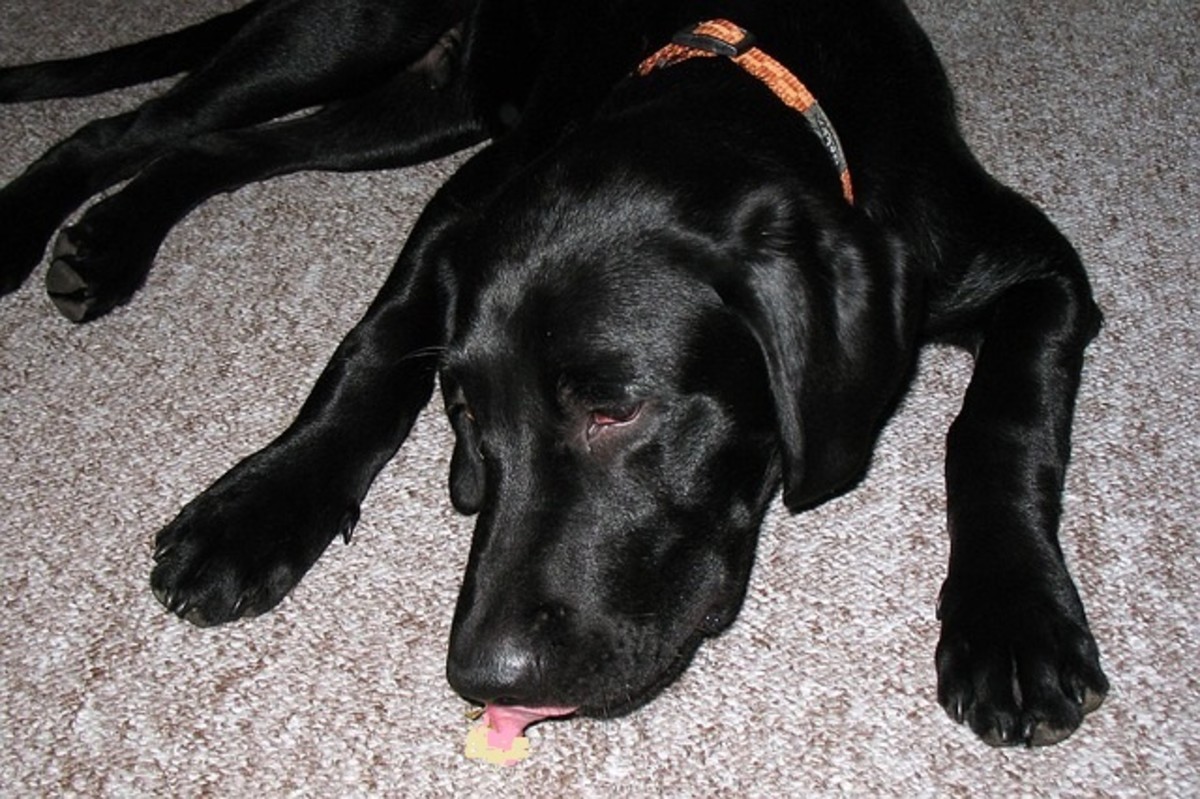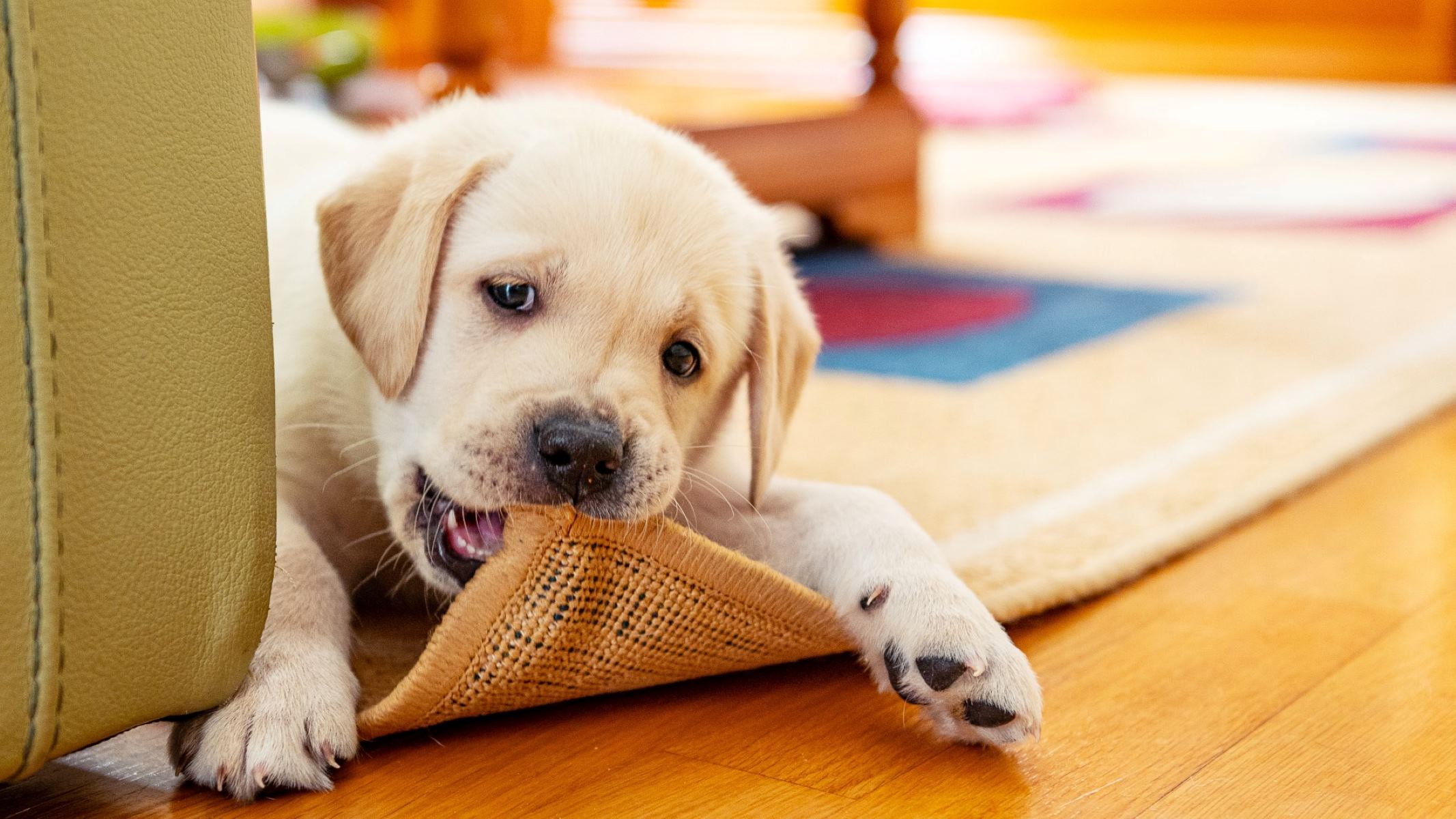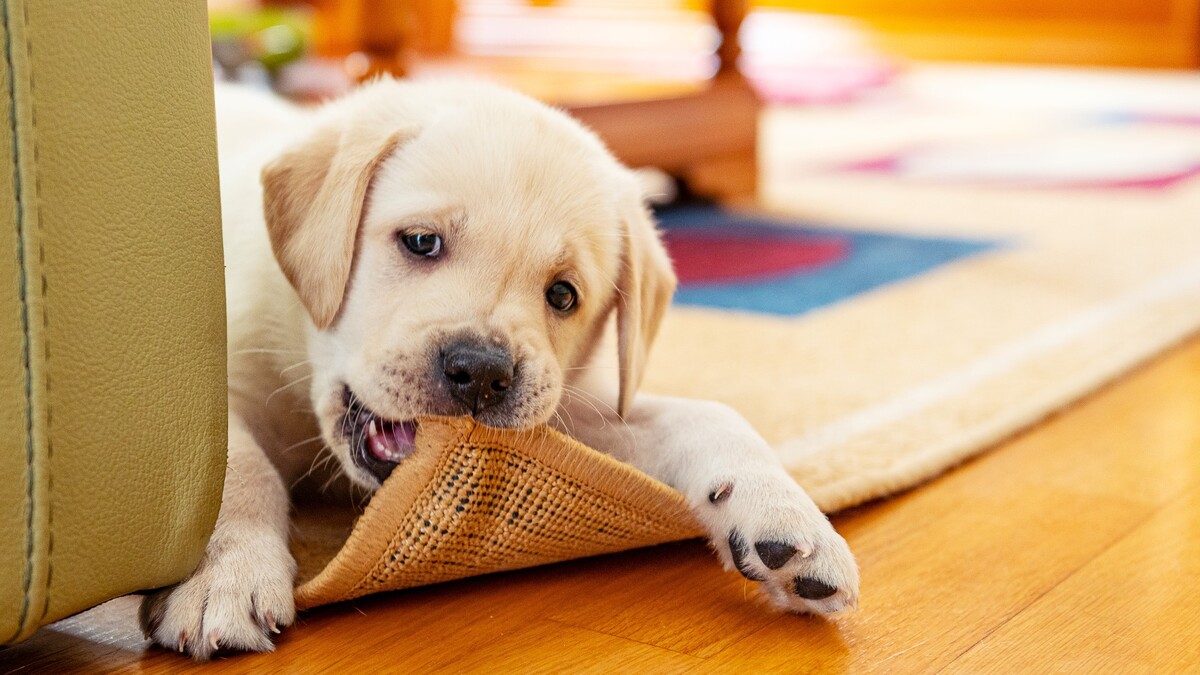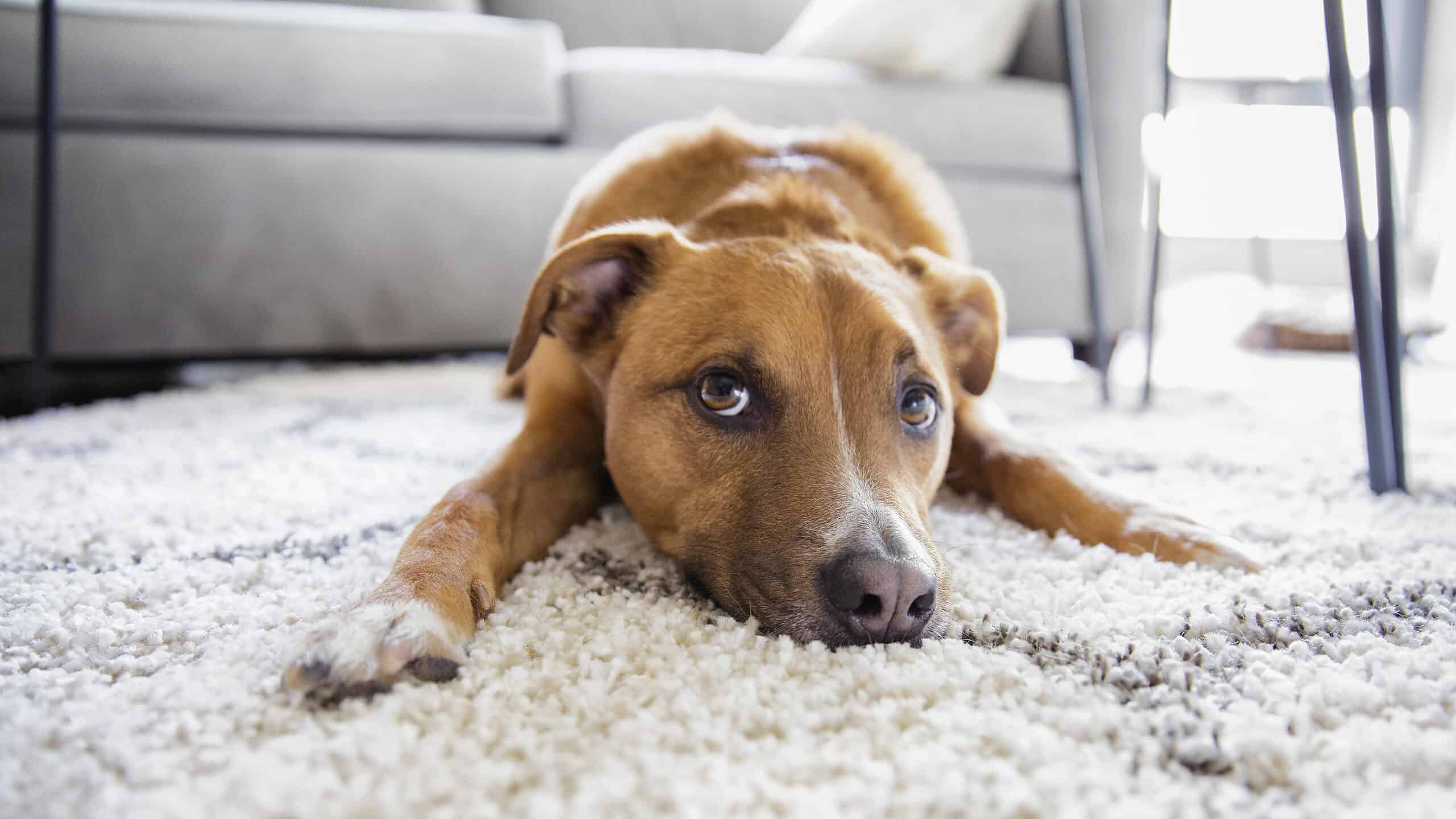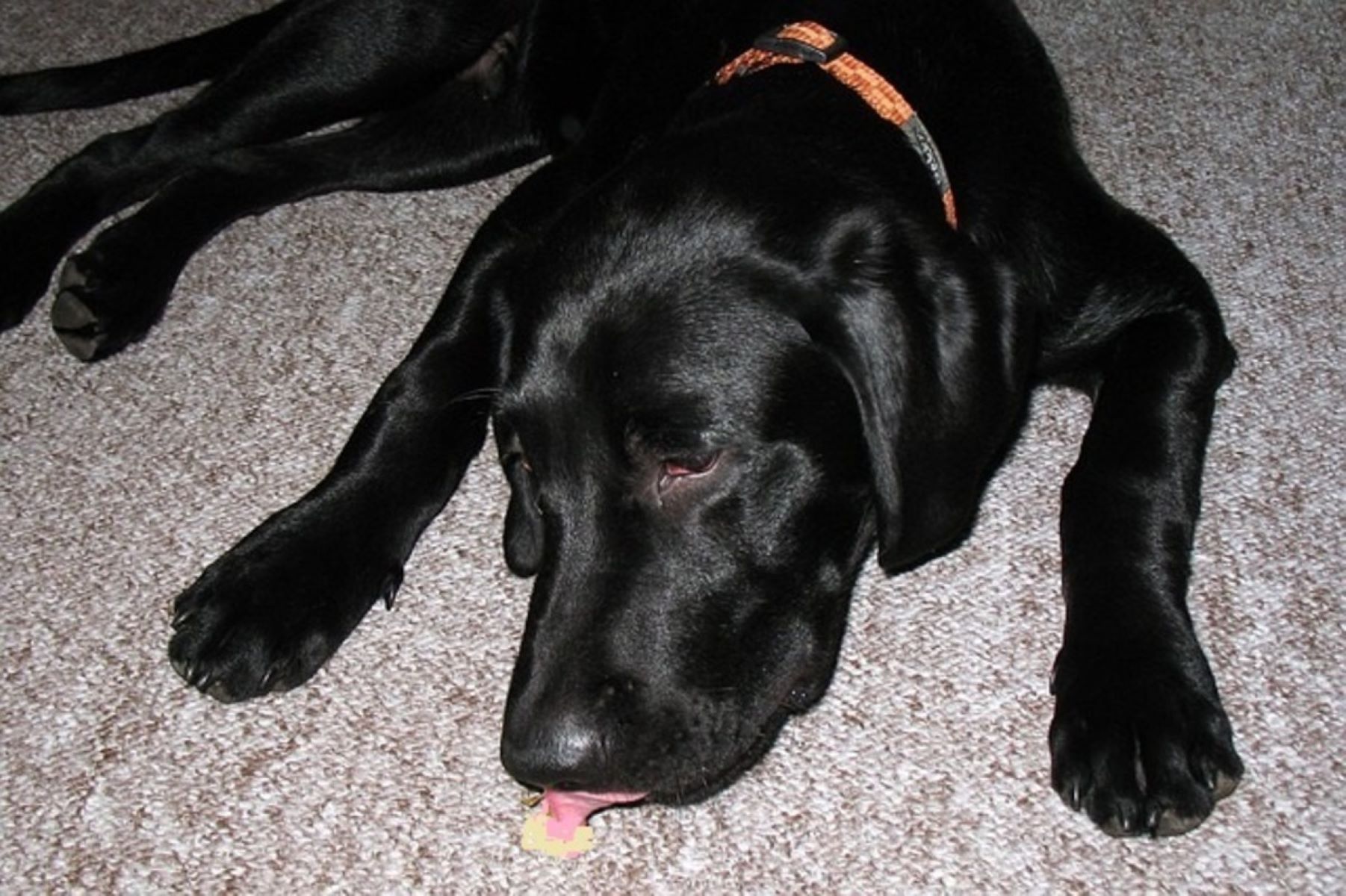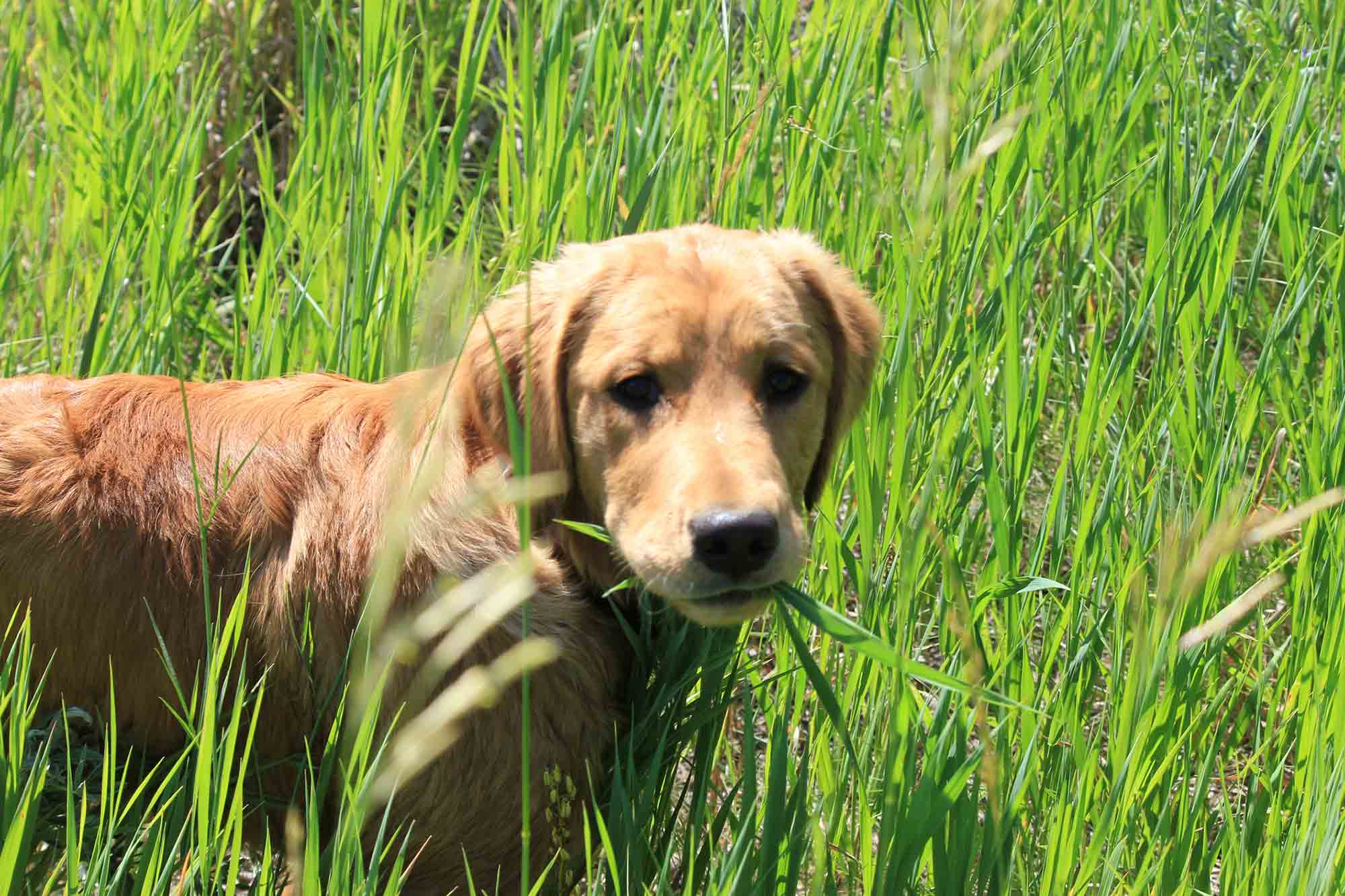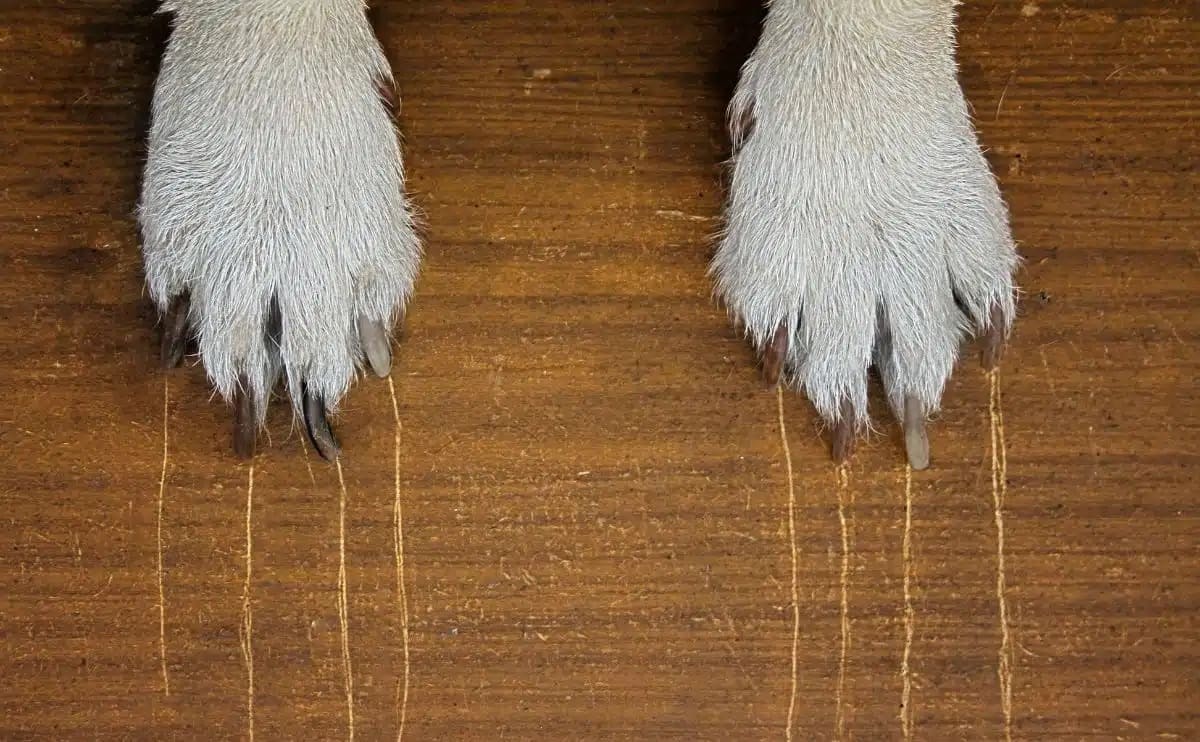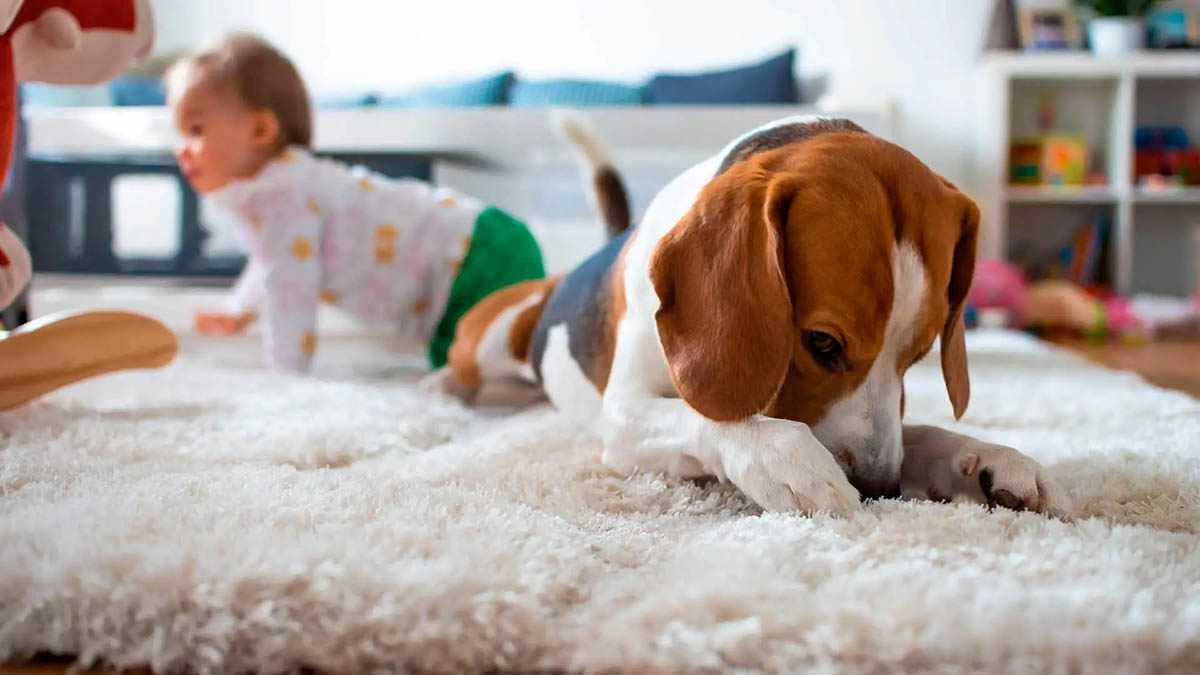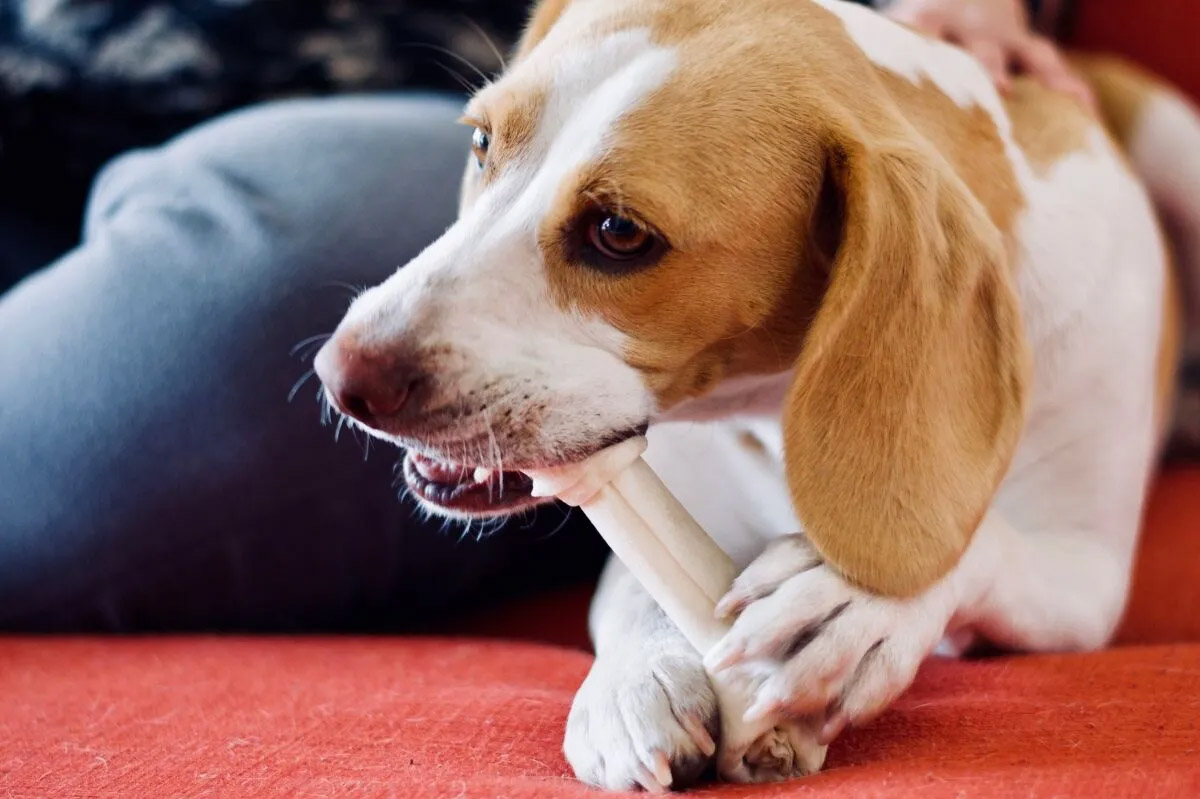

Articles
Why Do Dogs Bring Their Food To The Carpet
Modified: December 7, 2023
Discover why dogs bring their food to the carpet with these insightful articles. Learn more about this common behavior and how to address it.
(Many of the links in this article redirect to a specific reviewed product. Your purchase of these products through affiliate links helps to generate commission for Storables.com, at no extra cost. Learn more)
Introduction
Dogs are fascinating creatures with unique behaviors that often leave us puzzled and amused. One peculiar behavior that many dog owners have observed is their tendency to bring their food to the carpet. While it may seem strange to us, this behavior is actually quite common among dogs, and there are several reasons why they do it.
Understanding why dogs exhibit this behavior can shed light on their instincts and provide insight into their needs and desires. In this article, we will explore the reasons why dogs bring their food to the carpet and discuss how we can address this behavior.
Key Takeaways:
- Dogs bring food to the carpet due to instinctual behaviors, comfort preference, and seeking attention. Understanding their motivations helps in addressing the behavior effectively and compassionately.
- Creating a designated feeding area, using positive reinforcement, and redirecting behavior are effective solutions for dogs bringing food to the carpet. Consistency, patience, and understanding are key in breaking this habit.
Read more: Why Do Dogs Dig In The Carpet
Instinctual Behavior of Dogs
To understand why dogs bring their food to the carpet, we must first look at their instinctual behaviors. Dogs are descended from wolves, and although they have been domesticated for thousands of years, they still retain some of their ancestral traits.
One such trait is the instinct to protect and secure their resources. In the wild, wolves would bring their food to a safe and comfortable location, such as a den or a secluded spot, to eat without the risk of being disturbed by predators. This instinct has been passed down to our domesticated dogs, even though their environment has significantly changed.
Additionally, dogs have a strong association with their “den” – their home or living space. Bringing food to the carpet, which is often seen as part of their den, can fulfill their instinctual need to bring valuable items into their safe territory.
Another instinctual behavior that dogs exhibit is the need to mark their territory. By bringing their food to the carpet, dogs leave their scent behind, effectively claiming that spot as their own. This behavior is a way for them to communicate to other animals that they are the dominant presence in the area.
Understanding these instinctual behaviors can help us decipher why dogs bring their food to the carpet. It’s important to remember that dogs are driven by their natural instincts, and their actions are not always influenced by our human expectations.
Now that we have a foundation of understanding about the instinctive nature of dogs, let’s delve into the specific reasons why dogs exhibit this behavior.
Reasons Why Dogs Bring Their Food to the Carpet
There are several reasons why dogs bring their food to the carpet. Let’s explore each of these reasons in detail:
- Creating a comfortable eating environment: Dogs may bring their food to the carpet because they find it more comfortable to eat there. The soft texture of the carpet can provide a cozy surface for them to enjoy their meal. Additionally, some dogs may prefer the carpet over hard flooring as it may be easier on their joints.
- Protecting their food from potential threats: By bringing their food to the carpet, dogs may be instinctively trying to protect their meal from potential threats. This behavior stems from their ancestors’ need to keep their food safe from scavengers or other predators. The carpet acts as a boundary that they can guard while they eat.
- Mimicking natural feeding behavior: Dogs are scavengers by nature, and in the wild, they would bring their food back to their den or a safe space to consume it. Bringing their food to the carpet can be a way for dogs to mimic this natural feeding behavior, even in a domestic setting.
- Seeking attention or approval: Dogs are social animals and often seek interaction and attention from their human counterparts. Bringing their food to the carpet may be a way for them to engage with their owners and seek praise or approval for their actions. They may have learned that this behavior elicits a positive response from their humans.
- Habitual behavior due to past experiences: Dogs are creatures of habit, and if they have been allowed to bring food to the carpet in the past without any corrective action, it may become a learned behavior. Dogs can form associations and routines, and if they have positive experiences with eating on the carpet, they may continue doing so out of habit.
It’s important to note that these reasons may vary from dog to dog. Each dog is unique, and multiple factors can contribute to their individual behavior. By understanding these reasons, we can take steps to address this behavior in a way that is both effective and compassionate.
Creating a Comfortable Eating Environment
One reason why dogs bring their food to the carpet is to create a comfortable eating environment. Dogs are creatures of comfort, and they often seek out soft and cozy surfaces for various activities, including eating.
The texture and cushioning of the carpet can provide a more pleasant dining experience for dogs. Unlike hard floor surfaces, the carpet is gentle on their paws and joints, making it easier for them to stand or sit while eating. This is especially beneficial for older dogs or those with certain health conditions that may experience discomfort on hard surfaces.
Moreover, the carpet can also help absorb noise and prevent the food bowl from sliding or tipping over. It provides a stable and secure surface for dogs to focus on their meal without any distractions or disruptions.
Some dogs may have a preference for the carpet due to its association with relaxation and comfort. They may feel more at ease and less anxious while eating on the carpet. The familiar scent and feel of the carpet can provide a sense of security and make them more relaxed during mealtime.
If you notice that your dog consistently brings their food to the carpet, consider providing a comfortable and designated feeding area on the carpet. This can include using a raised food bowl stand or placing a designated feeding mat or rug on the carpet. By creating a designated space for them to eat comfortably, you can help satisfy their need for a cozy dining experience while also protecting your carpet from spills and stains.
Remember, understanding and accommodating your dog’s preferences for a comfortable eating environment can contribute to their overall well-being and make mealtime a more enjoyable experience for both of you.
Protecting Their Food from Potential Threats
One of the reasons why dogs bring their food to the carpet is rooted in their instinctual behavior to protect their resources. In the wild, dogs’ ancestors had to defend their meals from scavengers and predators, and this protective instinct is still present in domesticated dogs today.
By bringing their food to the carpet, dogs create a perceived boundary around their meal. The carpet acts as a protective zone, which they believe can deter potential threats and keep their food safe. The soft and enclosed nature of the carpet provides a sense of security and reassurance for dogs while they eat.
This behavior is often more prevalent in multi-dog households where competition for resources is common. By bringing their food to the carpet, dogs can prevent other dogs from approaching and potentially stealing their food. It becomes a way for them to establish boundaries and maintain ownership over their meal.
If you observe your dog consistently exhibiting this behavior, it may indicate that they feel anxious or stressed about their food being taken away. In such situations, it’s crucial to ensure that each dog has their own designated feeding area to avoid potential conflicts and reduce the need for resource guarding behavior.
While it’s important to respect your dog’s natural instinct to protect their food, it’s also essential to strike a balance to prevent possessiveness and aggression. Consider implementing positive reinforcement training techniques to establish a calm and controlled feeding routine. This will help your dog feel secure in their environment and reduce the need to bring their food to the carpet as a defensive measure.
Remember, by addressing their need for protection and security in a controlled manner, you can help minimize the likelihood of your dog engaging in resource guarding behavior and foster a peaceful mealtime environment.
Dogs may bring their food to the carpet due to a natural instinct to protect their food from potential threats. To discourage this behavior, try feeding your dog in a designated area away from carpeted surfaces.
Read more: Why Do Dogs Take Food To Carpet
Mimicking Natural Feeding Behavior
Dogs’ ancestral roots as scavengers and hunters play a significant role in their behavior, including their inclination to bring their food to the carpet. By bringing their food to a specific location, dogs may be mimicking their natural feeding behavior observed in the wild.
In the wild, wolves and other wild canines would bring their prey back to a safe and secluded spot, such as their den or a hidden area, to consume it. This behavior served multiple purposes, including minimizing the risk of their food being stolen by other animals and providing a secure environment in which they can eat without distractions.
Domesticated dogs, despite their comfortable living conditions, retain this instinctual behavior to some extent. Bringing food to the carpet allows them to recreate the sense of having a safe and controlled eating environment, even if it is not necessary for their survival. It is an innate behavior that harkens back to their wild ancestry.
Additionally, dogs may bring their food to the carpet as a way to preserve the leftovers or enjoy their meal at a later time. In the wild, canines would often cache or bury their excess food for future consumption. By bringing their food to the carpet, dogs may be instinctively trying to mimic this caching behavior, even if there is no need for it in a domestic setting.
If your dog exhibits this behavior, it is important to provide them with a designated feeding area. This can be a specific corner of the room or a comfortable mat where they are allowed to bring their food. By accommodating their natural inclination to recreate a safe eating environment, you can help satisfy their instinctual needs while also keeping your carpet clean and protected.
Understanding and acknowledging your dog’s desire to mimic their natural feeding behavior can provide insight into their behaviors and strengthen the bond between you and your furry friend.
Seeking Attention or Approval
Dogs are social animals that thrive on human interaction and attention. Bringing their food to the carpet can be a behavior motivated by their desire to seek attention or approval from their owners.
When dogs receive attention or positive reinforcement for bringing their food to the carpet in the past, they learn that this behavior can elicit a response from their human companions. This can include verbal praise, treats, or even physical affection. As a result, dogs may repeat this behavior to gain attention or seek approval from their owners.
Furthermore, bringing their food to the carpet may also serve as a way for dogs to engage with their owners during mealtime. They may see it as an opportunity to interact and bond with their human companions while enjoying their meal. This behavior allows them to participate in the family routine and feel included in the daily activities.
If your dog exhibits this behavior for attention or approval, it is essential to provide alternative ways for them to seek interaction and engagement. This can include scheduled playtime, training sessions, or puzzle toys that stimulate their mental and physical faculties. By fulfilling their need for attention and interaction through appropriate channels, you can gradually shift their focus away from bringing their food to the carpet.
However, it’s crucial to strike a balance and not completely discourage their desire for attention. Positive reinforcement can still be used, but it should be directed towards desired behaviors, such as sitting calmly during mealtime or waiting patiently for their food bowl. By reinforcing these behaviors, you can help redirect their attention and establish appropriate mealtime etiquette.
Remember, dogs are social beings that thrive on human interaction. By understanding their need for attention and approval, you can provide them with alternative ways to satisfy these needs while discouraging the behavior of bringing their food to the carpet.
Habitual Behavior Due to Past Experiences
Dogs, like humans, are creatures of habit. If they have been allowed to bring their food to the carpet in the past without any corrective action, it can become a learned behavior that they continue to exhibit.
Dogs are highly perceptive animals and can associate certain actions or environments with positive experiences. If they had previous experiences of bringing their food to the carpet and receiving attention, comfort, or a sense of security while doing so, they are more likely to repeat this behavior in the future.
For example, let’s say your dog accidentally spilled their food on the carpet while eating. If you immediately cleaned it up and gave them extra attention or treats, your dog may associate bringing food to the carpet with a positive outcome. Over time, this can lead to a habitually learned behavior, where they continue to bring their food to the carpet even when it’s not necessary or practical.
Similarly, if a dog has had limited exposure to eating on different surfaces or if they have only been fed on the carpet since they were a puppy, they may develop a strong preference for this habit. The familiarity of the carpet and the positive associations formed during mealtime can contribute to the repetition of this behavior.
To address this habitual behavior, it is important to introduce alternative feeding locations and discourage the behavior of bringing food to the carpet. You can gradually transition your dog to eating in a designated area, such as a crate, a specific room, or even outdoors. By consistently reinforcing the desired behavior of eating in the designated area and redirecting them when they go towards the carpet, you can break the habit and encourage a new routine.
It’s important to be patient during this transition process, as breaking a long-standing habit can take time. Ensure that the alternative feeding area is comfortable and inviting for your dog. Provide them with appropriate food bowls or mats to make the new location more appealing.
Consistency is key when addressing habitual behaviors. It’s essential to establish clear boundaries, offer positive reinforcement for desired behaviors, and redirect your dog when they attempt to bring their food to the carpet. With time and training, you can help your dog break the habit and develop new mealtime habits that are more appropriate for your home environment.
Training and Solutions for Dogs Bringing Food to the Carpet
If your dog has developed the habit of bringing their food to the carpet, there are several training techniques and solutions you can implement to address this behavior:
- Establish a designated feeding area: Create a specific area in your home where your dog is allowed to eat. This can be a corner of the kitchen, a designated feeding station, or even a crate. Consistently feeding your dog in this designated area will help them understand that the carpet is not an appropriate place for food.
- Use positive reinforcement: Reinforce the desired behavior of eating in the designated area by rewarding your dog with praise, treats, or a special toy. Positive reinforcement will help them associate the designated area with positive experiences and encourage them to choose that location for their meals.
- Redirect their behavior: If you catch your dog attempting to bring their food to the carpet, gently redirect them to the designated feeding area. Use verbal cues or gentle guidance to guide them to the appropriate spot. Repeat this redirection consistently to reinforce the new habit of eating in the designated area.
- Consistency is key: It’s vital to be consistent with your training efforts. Ensure that all family members are on the same page and follow the feeding routine consistently. Inconsistency can confuse your dog and hinder their progress in breaking the habit.
- Modify the environment: Place visual or physical barriers, such as baby gates or furniture, to prevent your dog from accessing the carpeted areas during mealtime. This will help reinforce the idea that the carpet is off-limits for food consumption.
- Provide alternative surfaces: Introduce alternative feeding surfaces, such as a mat, tray, or raised feeding station, in the designated area. These surfaces can mimic the soft texture of the carpet and provide a comfortable eating experience for your dog while directing them away from the carpet.
- Consult a professional: If the behavior persists or becomes problematic, consider seeking guidance from a professional dog trainer or behaviorist. They can provide personalized advice and create a training plan suited to your dog’s specific needs.
Remember, training takes time and patience. It’s important to remain positive, consistent, and understanding throughout the process. With consistent training and proper guidance, your dog can learn to associate the designated feeding area with mealtime and break the habit of bringing food to the carpet.
Read more: Why Do Dogs Roll Around On A Carpet
Conclusion
Bringing food to the carpet is a behavior commonly exhibited by dogs, influenced by their instinctual behaviors, past experiences, and desire for comfort, security, attention, or approval. Understanding the reasons behind this behavior can help us address it effectively and provide appropriate solutions.
By recognizing that dogs are creatures of habit and driven by their natural instincts, we can implement training techniques and environmental modifications to discourage the behavior of bringing food to the carpet. Establishing a designated feeding area, using positive reinforcement, redirecting their behavior, and providing alternative surfaces are all effective solutions in breaking this habit.
It is important to approach this behavior with patience, consistency, and understanding. Redirecting your dog’s attention, reinforcing desired behaviors, and setting clear boundaries will aid in creating new mealtime habits that align with your home environment and prevent damage to your carpet.
Remember, every dog is unique, and their reasons for bringing food to the carpet may vary. If you encounter challenges or feel unsure about how to address this behavior, consider consulting a professional dog trainer or behaviorist who can provide personalized guidance and support.
Ultimately, by addressing the behavior of bringing food to the carpet, we can enhance our dogs’ dining experiences, create a more harmonious living environment, and strengthen the bond between us and our furry companions.
Frequently Asked Questions about Why Do Dogs Bring Their Food To The Carpet
Was this page helpful?
At Storables.com, we guarantee accurate and reliable information. Our content, validated by Expert Board Contributors, is crafted following stringent Editorial Policies. We're committed to providing you with well-researched, expert-backed insights for all your informational needs.
